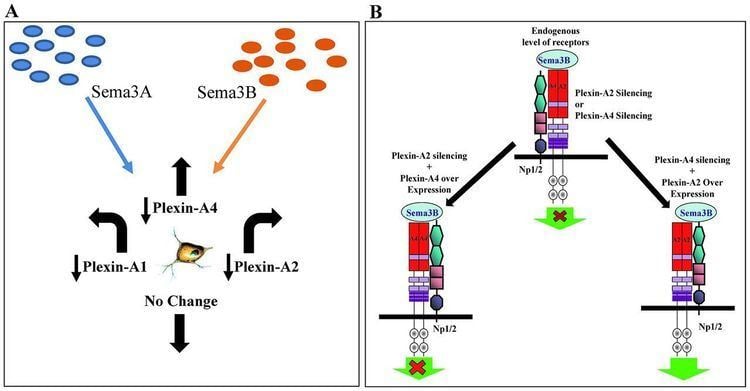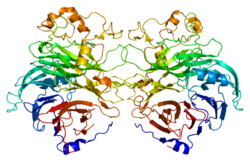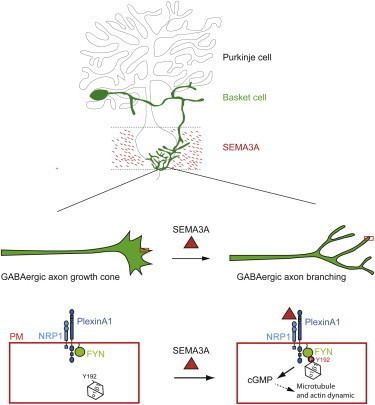Species Human Entrez 10371 | Human Mouse Ensembl ENSG00000075213 | |
Aliases SEMA3A, COLL1, HH16, Hsema-I, Hsema-III, SEMA1, SEMAD, SEMAIII, SEMAL, SemD, coll-1, semaphorin 3A External IDs MGI: 107558 HomoloGene: 31358 GeneCards: SEMA3A | ||
Sema3a treatment small wmv
Semaphorin-3A is a protein that in humans is encoded by the SEMA3A gene.
Contents
Function
The SEMA3A gene is a member of the semaphorin family and encodes a protein with an Ig-like C2-type (immunoglobulin-like) domain, a PSI domain and a Sema domain. This secreted Sema3A protein can function as either a chemorepulsive agent, inhibiting axonal outgrowth, or as a chemoattractive agent, stimulating the growth of apical dendrites. In both cases, the protein is vital for normal neuronal pattern development.
Semaphorin-3A is secreted by neurons and surrounding tissue to guide migrating cells and axons in the developing nervous system. Axon pathfinding is the process by which neurons follow very precise paths, sends out axons, and react to specific chemical environments to reach the correct endpoint. The guidance is critical for the precise formation of neurons and the surrounding vasculature. Guidance cues, such as Sema3A, induce the collapse and paralysis of neuronal growth cones during development of the nervous system.

This guidance cue for axons of neurons are signaled through receptor complexes containing Neuropilin-1 (NRP1) and a co-receptor. One of the first identified intracellular messenger required for the growth cone-collapse induced by Sema3A is the CRMP protein called CRMP2.
Clinical significance

The protein Sema3A is highly expressed in scar tissue after traumatic central nervous system injuries, such as spinal cord injury. Sema3A, and the other class 3 semaphorins, contributes to the failure of neuronal regeneration after CNS injury by regulating axonal re-growth, re-myelination, re-vascularisation, and the immune response.

Increased expression of Sema3A is associated with schizophrenia and is seen in a variety of human tumor cell lines. Also, aberrant release of this protein is associated with the progression of Alzheimer's disease.
Additionally, the terminal Schwann cells of ALS mice (SOD1 mutant) express Sema3A at fast-fatigable fiber neuromuscular junctions greater than wild-type mice. This expression is greatest pre-symptomatically corresponding to ALS progression in which fast-fatigable fiber denervation precedes clinical symptoms. Because Sema3A is involved in growth cone collapse and axon pruning and repulsion, it potentially holds a causal relationship to synaptic weakening and denervation that precedes motor neuron apoptosis in ALS.
